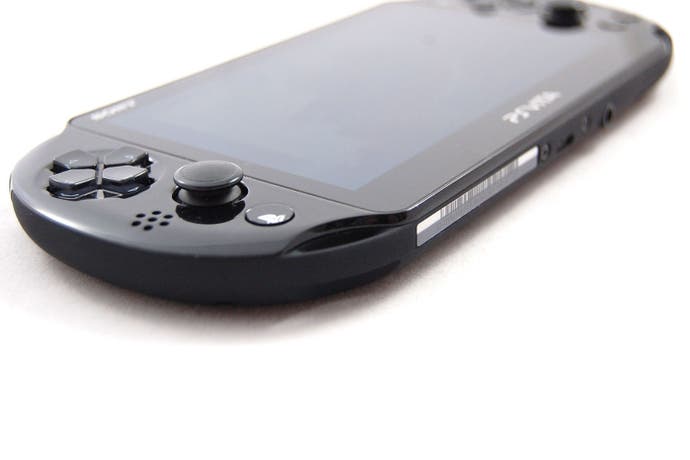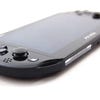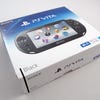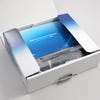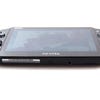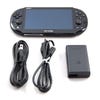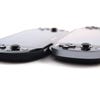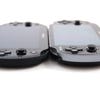PlayStation Vita PCH-2000 review
Can a slim and light chassis trump the screen downgrade?
This review was originally published on October 28, 2013 and has been updated to reflect differences between the Japanese and European price strategies for the new Vita.
While PlayStation Vita remains the portable console of choice for the hardcore gamer, the machine hasn't seen the level of mainstream success Sony would have hoped for, with sales trailing far behind Nintendo's 3DS. This has led to a catch-22 situation where many consumers see little reason to purchase the system owing to lack of software, while publishers have little incentive to produce top-tier titles for the console until the user base grows considerably. That's a real shame considering that the Vita's dual analogue control set-up, high-resolution OLED touch-screen and powerful mobile hardware make it perfect for both big-budget triple-A titles and the smaller indie games that are now making up an ever-increasing share of the system's library.
The introduction of the new PlayStation Vita - codenamed PCH-2000 - is Sony's attempt to improve the situation by providing consumers with a more affordable entry-level version of the machine, delivering all of the core features at a reduced built-cost. Right now, the launch retail price is very high indeed at £180 but similar to the PS3 "Super Slim", a unit that's cheaper to manufacture opens the door for cheaper prices at retail in the medium to longer term. Naturally, in order to accommodate the reduced cost of the new model the hardware has undergone several alterations: the original's cutting-edge OLED display gets dropped in favour of a more traditional LCD screen, and the console's design sees some dramatic changes, with the new machine being some 20 percent thinner and 15 percent lighter than the launch unit. The new model also comes complete with 1GB of built-in memory (used for saving games and smaller PSN downloads) and is said to feature improved battery life, reportedly adding on an extra hour's worth of playtime on a full charge.
Now available in the UK, the new Vita's initial £180 price-point is somewhat expensive factoring in some of the exceptional launch model deals we saw over Christmas, but once competition in the market kicks in, the machine should hopefully offer a good deal for those looking for a slimmer and lighter version of the console. But the question is, do the changes in screen technology and form factor impact the gameplay experience? Or has Sony pulled off some cunning design wins? Perhaps inevitably, it's a little bit of both.
"Significantly improved ergonomics make the new Vita easier to handle, while the smartphone-style power connector is a really useful change."
On first impressions, it's immediately obvious just how much thinner the PCH-2000 is compared to the original Vita. The slimmer form factor and more curved design gives the unit a somewhat sleeker feel than the original, and one that is also better-suited to those with smaller hands. In comparison, the reduction in weight is actually quite subtle, but the loss of 'heft' over the original Vita makes the new PCH-2000 model more comfortable to hold over prolonged periods of time. There's less in the way of finger strain resulting from having to hold up the machine when on the move, although in fairness this is far less of an issue when using the original Vita at home.
Moving on, the rubberised material used by the grips on the rear of the original Vita has extended to the sides on the new model, giving the unit a non-slippery textured feel in these areas. Overall build quality is solid, and unlike many budget-orientated redesigns, we don't get the feeling Sony is unnecessarily cutting costs to shave the price tag. While the curved surround of the machine and matte black plastic trim means that the unit lacks some of the original Vita's premium finish, the PCH-2000 never feels cheap to the touch. In common with many of Sony's second-generation console revisions, you can see where the costs are cut, but at the same time the new take on the established design is quite appealing.
Beyond the tweaked aesthetics and slimming down of the unit, other design changes are minor. The unused port situated next to the game card slot at the top of the original Vita has been removed, while the game card slot is now located in the middle of the console and is protected by a single, large dust cover. The headphone and power supply/USB interfaces remain on the bottom of the unit, although the custom connector used to attach the power supply has been replaced with a conventional micro USB connector - the same used on Android smartphones and other mobile devices. The power light is no longer housed beneath the home button, instead given its own LED situated next to the power switch at the top of the machine, which makes far more sense.
"The d-pad still ranks amongst the best we've ever used on a Sony PlayStation system: it's great for 2D titles and fighting games."
Above, you'll find some shots of the original Vita up against the new model. Sleeker and visibly more curved in appearance, the new PCH-2000 console features a form factor that is noticeably slimmer than the original Vita. However the textured sides and visible border around the screen detract a little from the premium finish of the original.
Other changes have more of an impact in the day-to-day use of the console. The home, start and select buttons have been made larger and more prominent, and also adopt a round design in place of the smaller oval shape used on the original Vita. This makes these easier to find when your eyes are firmly focused on the screen, whereas in the past we found the start and select buttons were more difficult to find when heavily immersed in gameplay.
Elsewhere, the d-pad, analogue sticks, and face buttons all look and feel pretty much the same as before, so are both durable and highly responsive, with the digital inputs featuring a definitely firm click when pressed down. The d-pad still ranks among the best we've ever used on a PlayStation system: great for 2D titles and fighting games. Meanwhile, the L and R shoulder buttons remain basically unchanged in terms of how they look and operate.
The Vita PCH-2000 retains the stereo speakers found in the previous model, and although their appearance is a little different in order to match the curved design of the new machine, sound quality is comparable. Audio remains crisp and clear at sensible volume levels, with good separation between left and right channels, and while there is a distinct lack of bass, this is easily solved by plugging in a decent pair of headphones. The front and rear cameras are also identical, and as such there is no improvement in photo or video quality on offer, both of which pale in comparison to what most smartphones are capable of.
"Sony's recent TGS reveal has seen the handheld expand into the living room - we'll be reviewing the Vita TV next month."
| PCH-1000 | PCH-2000 | Vita TV | |
|---|---|---|---|
| Dimensions | 83.5 x 182 x 18.6mm | 85.1 x 183.6 x 15mm | 65 x 105 x 13.6mm |
| Weight | 260g | 219g | 110g |
| Storage | Memory Card/Game Card | 1GB Onboard/Memory Card/Game Card | 1GB Onboard/Memory Card/Game Card |
| Display | 5-inch 960x544 OLED | 5-inch 960x544 IPS LCD | - |
| USB Connectivity | Proprietary | Micro USB | Standard USB |
| Battery Life | Around five hours | Around six hours | - |
Screen quality, battery life and loading times
Besides the impressive graphical capabilities of the console, it is the Vita's beautiful OLED screen that really makes it stand apart from its contemporaries. Vibrant colours and deep black levels are joined with near-perfect motion handling that is still yet to be matched by any consumer LCD screen. This is also one of the most expensive components that make up the impressive Vita hardware, and in order to keep the price tag down on the new model is sadly one that had to go. With the PCH-2000 we see the system's trademark OLED screen replaced with what appears to be an IPS panel LCD display, and while the pixel density and 960x540 resolution remains the same, the switch in technology has implications in other areas regarding picture quality. Motion handling is certainly less impressive, with visible smearing in fast-moving scenes and extended camera pans, while colours appear less vibrant and contrast ratio is also greatly diminished.
The inky blacks found on the original Vita appear more grey in dimly lit viewing conditions on the PCH-2000, although the small size of the screen means that the difference doesn't stand out as much as you may think. In fact, due to the reduced contrast ratio and poorer blacks, the display in the PCH-2000 Vita appears to be brighter than the original OLED screen when set at the same brightness level. However, this is at the expense of depth and three-dimensionality, which are somewhat lacking in comparison. The sub-pixel structure of the original Vita's OLED screen also makes for a slightly smoother image than the new LCD equivalent, but this isn't noticeably apparent outside of viewing text and menus. Thankfully, the use of an IPS panel means that viewing angles are generous and colour accuracy is still very good, if a little under-saturated - colours simply don't pop in the same way as the original Vita's beautiful screen.
Here are head-to-head shots of the screens from both Vitas, original on the left and PCH-2000 on the right. The PCH-2000's use of an LCD display results in less vibrant colours, reduced contrast ratio, and poorer motion handling. However, the high pixel density still delivers images that appear crisp and clear, and perceived brightness is actually higher.


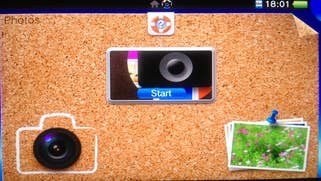
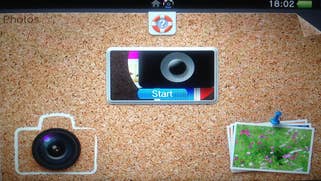
Ultimately, while the use of an LCD panel cannot match the same level of performance found in the previous Vita's OLED display, it comfortably holds up against some of those found in top-end smartphones. So in that respect the PCH-2000's screen is still rather excellent, and a cut above many other competing handheld devices, although it won't have you captivated in the same way as the original OLED screen.
Moving on to battery life, Sony claims that the new PCH-2000 model features around an extra hour's worth of play time on a full charge over that of the original Vita, which manages around five hours or so depending on processor load and display brightness. During our testing of the PCH-2000 over an afternoon we extracted six hours and nine minutes of use with the machine, including multiple gaming sessions (Rayman Legends, Need For Speed: Most Wanted and Assassin's Creed: Liberation) along with taking photos and turning the unit off (and put into standby) to simulate real-world use. The brightness slider was also placed just over half way, but the display still gave us plenty of light output for use in a bright room situated next to a window.
On the other hand, loading times remained unchanged, which comes as no surprise since this aspect is limited by the memory speed of the cards the games are stored upon and the available RAM. The additional 1GB of memory included in the PCH-2000 is used purely for storage purposes, but the advantage here is that you don't need to purchase an additional memory card to play titles that previously required you to do so when using the original Vita. Given the proprietary and expensive nature of Vita memory cards, this is a logical move by Sony.
"Sony has produced a carefully designed lower-cost alternative that keeps the high-end image of the Vita brand alive and intact."

PlayStation Vita PCH-2000: the Digital Foundry verdict
When Sony released the PSP E-1000 in order to provide a cheaper alternative to the regular Slim 3000 model, we found that the company had been a little too aggressive with its cost-cutting measures, resulting in key features - such as WiFi and the headphone remote connector - being removed. This limited both the functionality and appeal of the device, despite some noticeable improvements in other areas, such as the return to a progressive-scan LCD screen and the matte finish of the unit.
Thankfully, with the new PCH-2000 version of the Vita Sony has avoided making the same mistakes, and instead has produced a carefully designed lower-cost alternative to the original Vita console that keeps the high-end image of the brand alive and intact. The new PCH-2000 model is a fine piece of hardware that retains much of the premium feel and quality construction associated with the original Vita console, but also improves upon it with regards to the slimmer form factor and more textured feel. The inclusion of 1GB of internal memory also comes in handy when it comes to installing retail games onto the system and downloading smaller titles from PSN. That said, you'll still be needing at least a 16GB card - or larger - to get the most out of the system if you are planning to go down the digital download route.
Of course, the compromise here comes with the screen and while the IPS panel used in the PCH-2000 is excellent by mobile LCD standards, it simply can't match the wonderfully deep and colourful images displayed by the original Vita's state-of-the-art OLED alternative. The new model feels generally nicer to hold and to use, but no longer features the same alluring screen quality as before. In that respect if the size and weight of the original Vita doesn't bother you, we think that the superior OLED screen makes it the better unit overall, even though you miss out on the extra battery life and additional storage.
Overall, the PCH-2000 is a nice piece of kit, but given the choice, it actually makes more sense right now to grab the original model, available online for around £169 along with Sony's 10-game "mega pack" - extraordinary value considering that the new Slim model is actually more expensive, offering less value owing to the omission of the bundled games and sizeable memory card. Historically, Sony's revised models tend to launch at a price premium before becoming more affordable, but we can't help but feel somewhat bewildered by the decision-making here. Vita needs all the help it can get: releasing a less desirable, but more much more expensive revision isn't really the shot in the arm we were hoping for.
